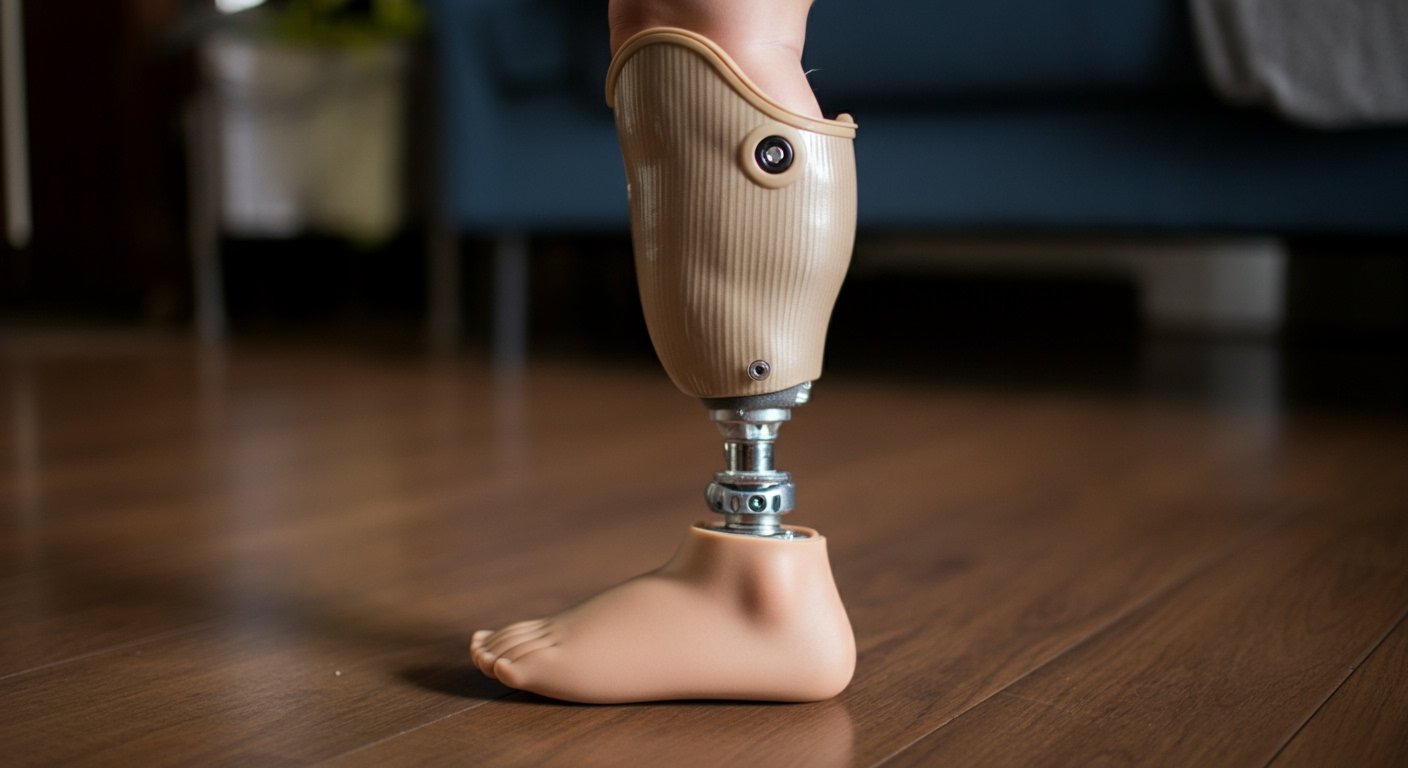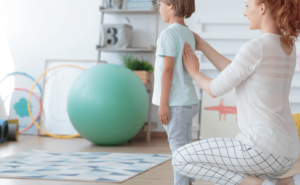When is the right time for a child to be fitted with a prosthetic? As a parent or caregiver, this question is likely at the front of your mind if your child is living with a limb difference. The truth is, every child’s needs are different, but early intervention can make a huge impact on their growth, mobility, and independence. We’ll explore the ideal age and key factors for starting with a prosthesis, as well as how prosthetics empower kids to thrive.
Key Takeaways:
- Early Fitting: Prosthetics can often be fitted as early as six months for congenital limb differences or nine to twelve months after limb loss for childhood amputees.
- Types of Prosthetics: Passive prosthetics aid balance; myoelectric prosthetics offer fine motor control; activity-specific prosthetics support specific hobbies like swimming.
- Growth Adjustments: Pediatric prosthetics require frequent adjustments as children grow, sometimes every one to two years.
- Health Considerations: Healthy skin and muscle strength are essential; surgical interventions may be required for bone or soft tissue issues.
- Benefits: Early prosthetic use promotes motor skill development, prevents overuse injuries, and encourages independence.
- Emotional and Social Impact: Prosthetics support confidence, adaptability, and normalization but require physical therapy and education for proper use.
- Costs & Insurance: Prosthetics range from $5,000–$50,000; insurance coverage varies, but fundraising and nonprofit support can help manage expenses.
When Should a Child Get Their First Prosthesis?
Children can often be fitted for prosthetics as early as six months old. This age is common for infants with congenital limb differences to begin using a passive prosthesis. A passive prosthesis helps babies learn balance and simple movements. Starting this early lets their brains adapt and integrate the new limb into daily motion.
For children who experience limb loss after birth, the timeline depends on their ability to sit, stand, or engage with objects. Typically, when a baby begins pulling up to stand—around nine to twelve months—they may be ready. This timing ensures they develop strength and skill with both sides of their body working together.
When a prosthetic is introduced early, it encourages normal growth and reduces overuse injuries in the non-affected limb. For example, without a prosthetic, children may over-rely on one arm. Long-term, this can lead to shoulder or back strain. Using a prosthesis early can also support better motor skill development and coordination.
At around eighteen months, myoelectric prostheses—devices controlled by muscle signals—are often introduced. These provide young children with fine motor control, allowing them to pinch objects, press buttons, or hold utensils. The earlier they begin, the more skilled and confident they become with advanced devices.
For older children, it is still beneficial to fit a prosthetic as soon as possible. Their age might cause some adjustment challenges, but collaboration between parents, therapists, and prosthetists ensures they overcome them. Whether for an infant or a teenager, prosthetics help build a sense of independence, movement, and belonging.

Can My Child Get a Prosthesis?
Prosthetics and Development
The right time depends on the child’s readiness and their specific limb difference. If the child has a congenital limb difference, fitting might begin as early as six months with a passive prosthetic, which supports basic movement. At this age, babies begin to sit up, develop motor skills, and explore their surroundings. Early fitting helps both physical and brain development, making the prosthetic a natural part of life. As the child grows, more advanced prosthetics, like myoelectric ones, are considered.
Prosthetics and Medical Concerns
A physician plays a key role in determining if and when a prosthesis is right. They assess the child’s health, limb condition, and readiness for fitting. A prosthetist and a physical therapist usually join the discussion to create a useful plan. Together, they make sure the prosthesis matches the child’s needs. Early intervention with pediatric prosthetics can improve long-term outcomes. Regular follow-ups also help track growth and adjust the prosthetic as needed.
Health factors like skin concerns, muscle strength, and limb condition are important. The skin on the residual limb must be healthy to avoid irritation or infection from using a prosthetic. Children prone to swelling or bone growth issues may need extra medical support. Some children might face challenges like neuromas or bone spurs, which could require surgical solutions before they’re ready to use a prosthesis. Balancing these health needs with the child’s emotional readiness ensures the prosthesis has a positive impact.
How Do Prosthetics Change as Children Grow?
Prosthetics for Children
Prosthetics for children are made to be lightweight and strong. The materials need to support active movement, like running or climbing, while being easy for kids to handle. Some prosthetics are passive, mainly serving to support balance and appearance. An example is a hand prosthetic that helps kids hold objects without grip function. Other prosthetics, like myoelectric devices, use muscle signals to control movement. These are ideal for older kids who are ready for more advanced use. Activity-specific prostheses also exist, built for tasks like biking or swimming. They give kids the freedom to do what they love safely and comfortably.
Prosthetics and Children’s Growth
Prosthetics for children are designed to adapt as their bodies grow. Since kids can grow quickly, prosthetic lengths and fittings often need regular adjustments. Younger children, especially toddlers, may require new devices every year. Some prosthetics use modular designs, which allow different parts to be swapped out rather than replacing the entire device. This approach helps families reduce costs and maintain a better fit over time. For older kids, adjustments happen less often, but regular checkups are critical to preventing discomfort or misalignment as the child grows.
Prosthetics and Growth Spurts
As kids grow, they can encounter issues like outgrowing their prosthetics too fast, which can lead to discomfort. Poorly fitting prosthetics may cause skin irritation or pressure sores. Rapid growth also affects motor skills, which means children need ongoing training to adjust to their updated device. Maintenance is another challenge since active play can wear down parts over time. Frequent visits to a prosthetist ensure these issues get addressed quickly. Families must commit to consistent follow-ups to make the most of the child’s prosthetic experience.
What Steps Help Children Adjust to Life with Prosthetics?
Helping children adapt to prosthetics takes teamwork, patience, and a positive attitude. The process can feel overwhelming, but following key steps will make a huge difference. It’s not just about putting on the prosthesis; it’s about helping children feel confident and capable in their everyday lives.
Physical Therapy
Physical therapy is crucial because it teaches children how to use their prosthetic correctly. Therapists guide children as they build strength, balance, and coordination with their new prosthetic. For instance, a child learning to grip with a mechanical hand will practice holding everyday objects during therapy. Without these sessions, children might feel frustrated or avoid using the device altogether. Physical therapists also adapt exercises based on the child’s specific needs, ensuring they stay on track as their body grows and changes.
Education and Training
Children need to know how their prosthetic works to feel in control. Education starts as early as fitting day, when the prosthetist explains the device’s purpose and how to care for it. Kids also practice daily tasks, like eating or writing, so the prosthetic becomes part of their routine. The more a child understands their prosthetic, the more confident they’ll feel when facing challenges. Parents play a key role too, by staying informed and reinforcing what the child learns.
Sports and Extracurriculars
Activity-specific prosthetics open the door for children to explore new hobbies and sports. Imagine a child using a swimming prosthetic to hit the pool or a running blade to join a track team. This isn’t only about being active; it’s about building self-esteem and social connections. Even playground activities, like climbing or playing tag, become more manageable with the right device. Adjusting to sports with a prosthetic may take practice, but therapists and coaches help kids make it work. Over time, these experiences help children see their prosthetic not as a limitation, but as a tool for independence and fun.
What Emotional and Social Impacts Do Prosthetic Devices Have on Children?
Emotional Health
Children often face a mix of feelings when first using prosthetics. They may feel unsure about how others will see them or doubt their own abilities to use the device. For many, learning to wear and rely on a prosthetic means facing challenges head-on. Some kids deal with sadness or frustration as they adapt, which is perfectly normal. However, with a supportive team—including parents, therapists, and peers—they often gain confidence. The adjustment is a growth process, helping children build resilience as they come to see their prosthetic as part of themselves.
Independence
Prosthetics can make a huge difference in helping kids do everyday tasks. For example, a child with a prosthetic arm can learn to tie their shoes or eat a meal on their own. These small wins boost their sense of independence. Over time, as they practice and get more comfortable, they can take on bigger challenges, like riding a bike or helping with chores at home. Prosthetics are tools that empower them to be active and capable, giving them the freedom to participate in life on their terms.
Normalization
Society’s attitudes have a strong impact on how kids with prosthetics view themselves. Encouraging open conversations and teaching acceptance helps break down any stigma around prosthetic use. Communities can make a big difference by celebrating differences and highlighting success stories of individuals with prosthetics. Representation in the media also plays a role, showing kids that prosthetics are just another way of navigating the world.
What Role Do Cost and Insurance Coverage Play in Pediatric Prosthetics?
Average Costs of Childhood Prosthetics
The cost of prosthetics for children ranges from $5,000 to over $50,000. These prices include design, materials, fittings, and adjustments, which are unique for every child. Since kids grow quickly, their prosthetics often need to be replaced every one to two years, adding to the total expense. Advanced devices like myoelectric prosthetics cost more than simple passive ones. It's important to plan for these recurring costs when considering prosthetics for your child.
Insurance Coverage
Insurance coverage for child prosthetics is inconsistent and often incomplete. Unfortunately, this can often influence when kids can get prosthetics. Many plans cover basic prosthetics but may not include advanced or activity-specific devices. Certain policies cap how much they’ll pay yearly or for each prosthetic, leaving families to cover gaps. Some states in the U.S. require insurers to provide better prosthetic coverage, but these laws aren’t universal. Speaking with your insurance provider about their specific policies is key. If coverage is lacking, organizations like the Arm Dynamics and Shriner’s Children’s can be valuable resources for understanding options.
Fundraising and Financial Assistance
When insurance falls short, fundraising can bridge the gap. Community fundraising events like bake sales or crowdfunding platforms allow families to seek help from a broader network. Nonprofits also provide grants or financial aid to cover prosthetic expenses. Look for organizations that focus on pediatric limb differences or general healthcare financial assistance. Outside assistance can make an expensive process more manageable and secure the devices kids need.
Empowering Young Lives: Find the Perfect Fit with Horton’s Prosthetics
Choosing the right time for prosthetic fitting is vital for a child’s growth and independence. With personalized care and the right tools, children can thrive and live active, fulfilling lives, and Horton’s Orthotics and Prosthetics is here to help.



